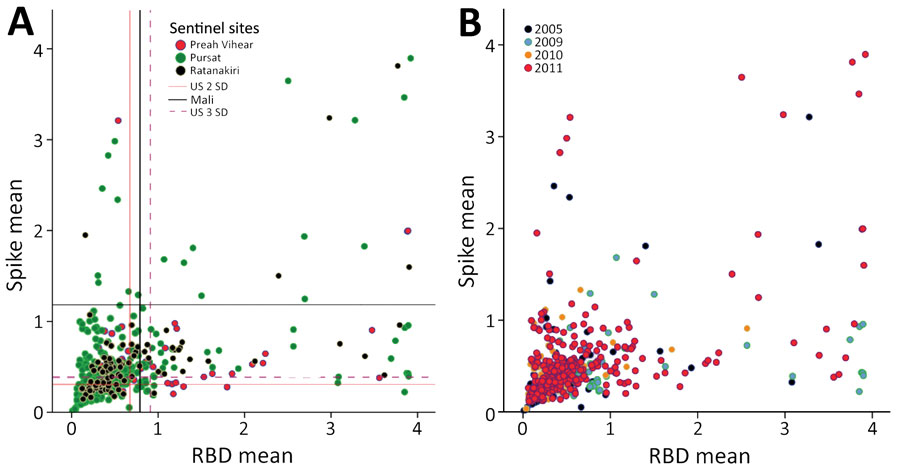Volume 28, Number 2—February 2022
Dispatch
SARS-CoV-2 Cross-Reactivity in Prepandemic Serum from Rural Malaria-Infected Persons, Cambodia
Figure 1

Figure 1. Mean antibody intensity in arbitrary ELISA units to spike and RBD in serum samples from prepandemic, malaria-positive rural persons in Cambodia, 2005–2011. A) Provinces indicated by color: Preah Vihear (pink), Pursat (green), Ratanakiri (black). B) Years indicated by color: 2005 (purple), 2009 (turquoise), 2010 (orange), and 2011 (pink). RBD, receptor binding domain.
Page created: December 02, 2021
Page updated: January 22, 2022
Page reviewed: January 22, 2022
The conclusions, findings, and opinions expressed by authors contributing to this journal do not necessarily reflect the official position of the U.S. Department of Health and Human Services, the Public Health Service, the Centers for Disease Control and Prevention, or the authors' affiliated institutions. Use of trade names is for identification only and does not imply endorsement by any of the groups named above.